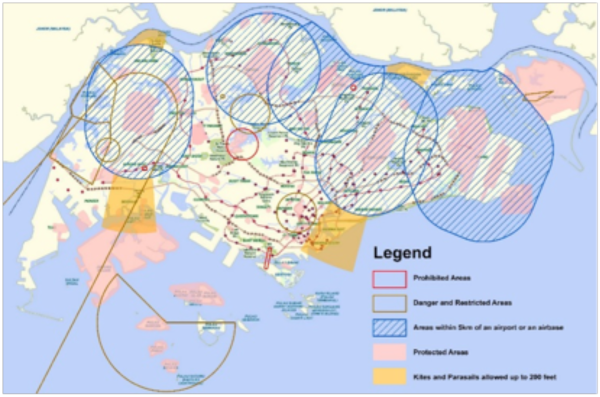
DRONES, or unmanned aviation vehicles or systems (UAVs or UASs), are a broad group of flying vehicles that operate remotely. Most of these vehicles are small (perhaps less than 50cm in diameter), and are able to fly to a substantial height. DJI, the biggest manufacturer of drones that you can buy off the shelf, has a 1,500 feet (457.2m) maximum height for its Phantom 2 model (image on right).
Most of these recreational drones today are for photography or surveillance purposes. The main reason is that the main equipment for such purposes “cameras” are lightweight enough to be carried across long distances without draining the battery life (and hence lowering the flight time) of the drone substantially. But for more complex purposes, such as carrying a large box to deliver across cities, battery life will need to improve significantly to be realistic.
Generally, if we want to customize a drone, it will need to be larger to fit more sophisticated equipment. Larger equipment not only reduces battery life as it tends to be heavier; it also makes the drone more cumbersome and would require special take-off and landing requirements. For instance, the Airbus Skyways drone has a diameter of 2.4m, which makes it unsuitable to use in indoor environments.
Drone technology is currently not considered mature enough to fly beyond the visual line of sight (BVLOS). Hence, in most countries, the use of drones is heavily regulated by government. For example, there are concerns whether a drone can take off and land safely in a crowded urban environment where GPS signals may be intermittent due to high-rise buildings.
Singapore is also unique in a sense that it has such a small land area and a large proportion of it is close to air bases, drones cannot be flown unless they have prior approval from the Civil Aviation Authority of Singapore (CAAS). See figure 1.
However, regulators and agencies are also aware that they would need to keep up with drone technology trends, rather than lag behind the technology curve. The Ministry of Transport announced the setting up of a drones test-bed environment in Buona Vista in Feb 2018.
CAAS also launched a call to seek and co-fund innovative proposals for drone use in Nov 2017. ST Logistics has submitted two proposals – one for warehouse stock-taking and one for courier services. We will also continue to seek potential partners who have the capabilities to test out drone use in our warehouse environments.

Figure 1. The majority of Singapore’s land area is either prohibited, protected, or are simply too close to an airport or airbase to be safe for drone flight. Source: CAAS
References: